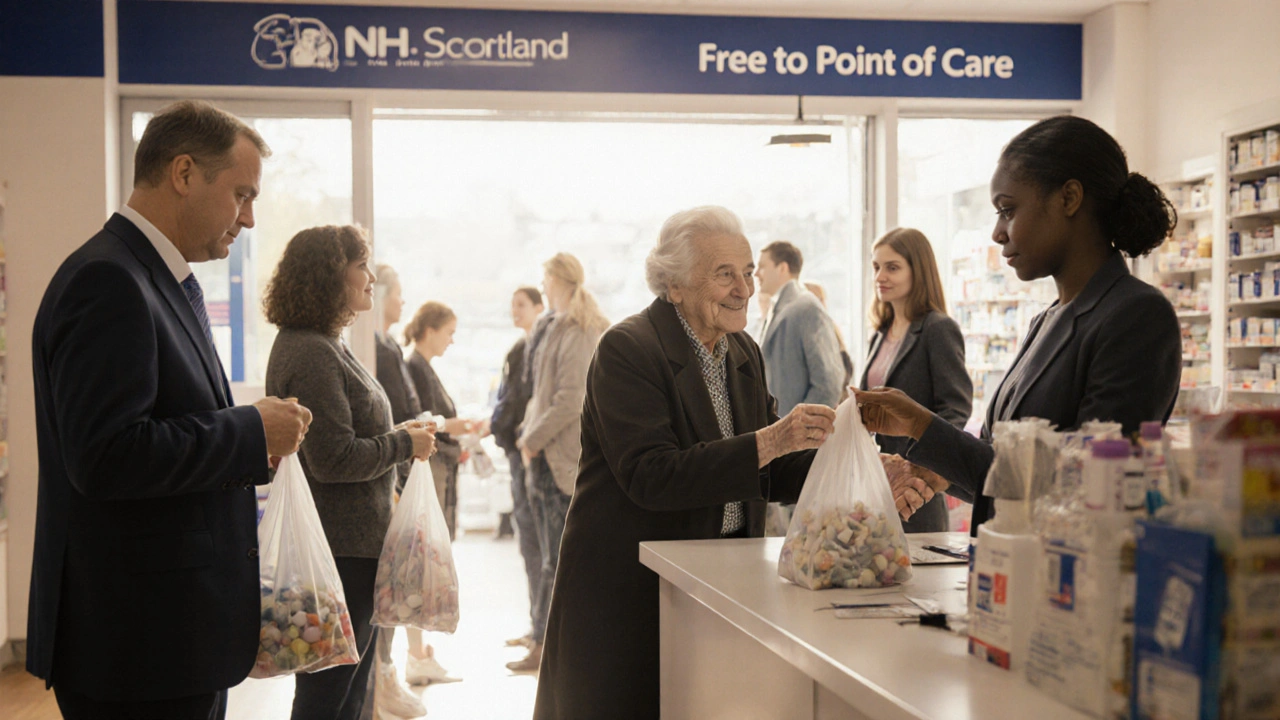Scottish health system: How it works, who runs it, and what you need to know
At the heart of daily life in Scotland is the Scottish health system, a publicly funded network that provides free healthcare at the point of use, managed by the Scottish Government and delivered through NHS Scotland. Also known as NHS Scotland, it’s not just a set of hospitals—it’s a whole way of organizing care, from your local GP to emergency care in Aberdeen or rural clinics in the Highlands. Unlike in England, where some services are privatized or outsourced, the Scottish health system keeps everything under public control. That means no private insurance is needed for basic care, and prescriptions are free for everyone, no matter your income.
This system doesn’t just serve people who live in cities. It reaches remote islands like Orkney and Shetland, where doctors travel by boat or plane to reach patients. It’s designed for a population spread thin across mountains, coasts, and villages. The NHS Scotland, the operational arm of the Scottish health system, employs over 160,000 staff and runs more than 1,000 health centers, hospitals, and community clinics. It’s funded by taxes, not bills. You don’t pay when you see a doctor, get a blood test, or are admitted to the hospital. The only exceptions? Dental care and eye exams—those have fixed charges unless you’re under 16, over 60, or on low income.
The Scottish health system, is structured around 14 regional health boards that handle local needs—from mental health services in Fife to addiction programs in Glasgow. Each board sets its own priorities, which is why wait times or available treatments can vary slightly between regions. This local control is a big deal. It means decisions are made closer to the people they affect, not by a distant bureaucracy in London. The system also has its own drug pricing rules, like Minimum Unit Pricing for alcohol, which was introduced to cut down on alcohol-related hospital admissions. It’s the same logic behind free prescriptions: use policy to improve health, not just treat illness after it happens.
What does this mean for you? If you’re moving to Fife, Edinburgh, or even a tiny village in the north, you’re covered. You register with a local GP, get a NHS number, and you’re in. No paperwork maze. No surprise bills. If you’re a visitor from outside the UK, emergency care is still free—but you might be charged for non-urgent treatment. That’s the rule. But for residents, it’s simple: if you need help, you get it. No questions asked at the door.
There are challenges—staff shortages, long waits for some surgeries, aging infrastructure—but the core idea stays strong: healthcare is a right, not a reward. The Scottish health system doesn’t promise perfection, but it does promise access. And that’s why, when you talk to locals about what they value most, it’s not the castles or the whisky—it’s knowing that if something goes wrong, the system will be there.
Below, you’ll find real stories and guides that show how this system touches everyday life—from talking to your doctor about meds, to understanding what’s covered when you’re a shift worker, to knowing your rights if you’re under 18 and need care. This isn’t theory. It’s what happens when healthcare is built for people, not profits.

Does Scotland Have Free Healthcare? What You Really Need to Know
Caleb Drummond Nov 4 16Scotland offers free healthcare to legal residents through NHS Scotland - no prescription charges, free emergency care, and subsidized dental and eye services. Tourists are not covered. Here's how it really works.
More Detail